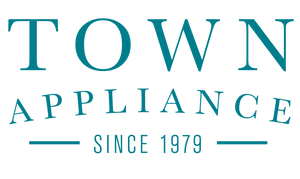When it comes to using a microwave oven, safety should always be a top priority. Not only does safe usage protect you from potential harm, but it can also extend the appliance's lifespan. In this article, we'll provide you with essential microwave oven safety tips to help you use your appliance safely and effectively. So, let's dive in and explore these important safety guidelines for your microwave oven.
Understanding Microwave Oven Safety Guidelines
When it comes to microwave oven safety, the first step is to read and understand the safety guidelines provided in the user manual. These guidelines are there to protect both you and your appliance. In this section, we will discuss the importance of following the manufacturer's instructions for safe usage. The user manual provides valuable information on how to properly operate your microwave. It will give you specific instructions on how to set the timer, select the power level, and more. But more importantly, it will contain safety guidelines that are essential to follow. Be sure to read through the safety guidelines thoroughly. This will help you better understand how to use your microwave safely and avoid any accidents. Remember that the safety guidelines are there for a reason, and it is important to follow them. If you have lost your user manual, don't worry. You can easily find a copy online on the manufacturer's website or by contacting our customer support.
In addition to the safety guidelines, the user manual also provides important information on how to maintain and care for your microwave. This information is crucial to keeping your appliance in good working condition and extending its lifespan. Always remember to refer back to the user manual whenever you are unsure about something related to your microwave oven. It is better to be safe than sorry, and following the manufacturer's instructions can prevent accidents and damage to your appliance.
Placement and Ventilation
Proper placement and ventilation are critical for safe microwave oven usage. When selecting a location for your microwave oven, consider the surrounding environment, such as nearby cabinets and appliances. Ensure that there is enough space around the appliance for proper ventilation and airflow. Adequate ventilation is essential for optimal performance and safety. Without proper airflow, the microwave oven may overheat, leading to potential hazards. Additionally, it is important to keep the appliance a safe distance away from other objects, such as curtains or flammable materials, to avoid potential fire hazards. When installing your microwave oven, make sure to follow the manufacturer's instructions for proper placement and ventilation. This will ensure that your appliance operates safely and efficiently.

Choosing Microwave-Safe Cookware
When it comes to using your microwave oven, it's crucial to choose the right kind of cookware. Not all containers are safe to use in the microwave, and using the wrong materials can lead to accidents, damage to the appliance, and even health risks. The first rule of thumb when it comes to selecting microwave-safe cookware is to avoid any materials that contain metal, such as aluminum foil, steel, or silverware. Metal reflects microwaves, which causes them to bounce around the appliance and create sparks, which can damage the oven, cause a fire, or pose a risk to your safety. Another type of material to avoid when using microwaves is plastic containers that aren't labeled as microwave-safe. Some plastics can't withstand the heat that microwave ovens produce and may melt, release harmful chemicals, or even catch fire. Be sure to check that the plastic you're using has a label that says "microwave-safe" or "heat-resistant." When it comes to safe materials to use in the microwave, glass and ceramic dishes are great options. They won't melt or warp, and they won't react to the microwaves like some plastics do. If you're going to use glassware, make sure that it's tempered, which means it can withstand sudden temperature changes. When buying new cookware for your microwave, look for products that are explicitly labeled as microwave-safe. Most modern cookware often includes symbols or phrases that indicate compatibility with microwaves. You can also use microwave-safe covers or splatter guards to help keep your food and your oven clean.
Safe Handling of Food Containers
When removing hot food containers from the microwave, it's crucial to take precautions to prevent steam burns. Always use oven mitts or a towel to protect your hands and fingers from the heat. Be sure to grip the container firmly to prevent it from slipping and spilling hot contents. It's also important to avoid placing your face directly over the food container when removing it from the microwave. Steam burns can cause serious injuries, so be sure to open the container away from your face and give it a moment to cool. If you need to transfer hot food from one container to another, use a utensil instead of pouring the contents. This will reduce the risk of spills and burns. And never use plastic containers that are not microwave-safe, as they can warp and release harmful chemicals into your food.
- Always use oven mitts or a towel to handle hot food containers.
- Grip the container firmly to prevent spills.
- Open the container away from your face to avoid steam burns.
- Use a utensil to transfer hot food to another container.
- Avoid using plastic containers that are not microwave-safe.

Be Mindful of Microwave-Heating Patterns
When using your microwave oven, it is essential to be aware of the microwave-heating patterns. Microwaves work by emitting electromagnetic radiation, which is absorbed by the food, causing the molecules to vibrate and generate heat. The heating pattern may not be uniform, resulting in some parts of the food being hotter than others. This uneven heating can lead to potentially harmful hotspots and create food safety concerns. To prevent uneven heating, you should stir or rotate your food periodically during the cooking process. This will ensure that the food is heated uniformly, eliminating the need to overheat certain parts to compensate for the cold spots. This method will also prevent the formation of hotspots that can cause burns or other injuries. If your microwave oven doesn't have a rotating plate, make sure to move the food around manually. Additionally, if you're heating something in a deep dish or container, make sure to make a well in the center to allow for more even heating.
Avoiding Metal and Aluminum Foil in Microwaves
It is extremely important to avoid using metal or aluminum foil in microwaves. When metal is heated in a microwave, it can cause sparking and lead to a fire hazard. Aluminum foil can also cause sparking and potentially damage the appliance. Instead of using metal or aluminum foil, opt for microwave-safe cookware and food containers. These are specifically designed for use in microwaves and will not cause any sparking or fire hazard. If you accidentally leave a metal utensil in the microwave, turn off the appliance immediately and remove the utensil with oven mitts. Do not use the appliance again until it has been thoroughly inspected for any damage. Remember to always be cautious and aware of the materials you are using in your microwave to avoid any potential risks.
Safety Precautions for Microwave-Ready Packaging
Using microwave-ready packaging can be convenient for heating up food quickly. However, it is important to take the necessary safety precautions to avoid accidents and ensure safe usage. Always follow the instructions provided on the packaging for microwave usage. This includes any recommended puncturing of the package to allow steam to escape. Failure to follow these instructions can result in the package exploding or catching fire, creating a dangerous situation. Remember that not all packaging is suitable for microwave use. Before placing any packaging in the microwave, ensure that it is labeled as microwave-safe. Using non-microwave-safe packaging can release harmful chemicals and create a fire risk. If you are unsure about the safety of a certain type of packaging in the microwave, it is best to err on the side of caution and avoid using it altogether.
Keeping Your Microwave Clean
Keeping your microwave clean is essential for its optimal performance and safety. Food residue left in the microwave can become a fire risk and compromise the appliance's longevity. Here are some tips to help you keep your microwave clean:
- Wipe down the interior of the microwave with a damp cloth or sponge after each use to remove any food residue.
- For tough stains, microwave a bowl of water with a few slices of lemon for a few minutes to loosen the debris before wiping it away.
- Remove any detachable parts, such as the turntable, and wash them with warm soapy water.
- Don't forget to clean the exterior of the microwave, including the buttons and handles, which can accumulate bacteria and germs.
- Avoid using harsh chemicals or abrasive materials that can damage the microwave's surface.
Child Safety with Microwaves
When it comes to child safety with microwaves, there are a few things to keep in mind. First and foremost, it is important to always supervise children when they are using or around microwaves. This will ensure that they are using the appliance safely and not accidentally causing harm to themselves or others. Another important feature to look for in microwave ovens is the child lock feature. This will prevent children from accidentally turning on the microwave or opening it while it is in use, which could result in burns or other injuries. Make sure to read the user manual and understand how to activate the child lock feature on your particular appliance. It may require a specific button combination or may be controlled through the settings menu.
Maintenance and Servicing
Regular maintenance of your microwave oven is crucial for ensuring safe and efficient usage. Not only does it prolong the lifespan of the appliance, but it also prevents any potential safety hazards. When it comes to maintenance, it's important to follow the manufacturer's instructions provided in the user manual. This includes regularly cleaning the microwave and checking for any signs of wear and tear. It's also recommended to have your microwave serviced by a professional on a regular basis. If your microwave is still under warranty, neglecting maintenance and servicing could void your warranty. Therefore, it's important to stay up to date with these tasks to protect your investment and ensure safe usage.
- Regularly clean the inside and outside of the microwave
- Check for any signs of wear and tear
- Follow the manufacturer's instructions for maintenance and servicing
- Have your microwave serviced by a professional regularly
- Don't neglect maintenance and servicing, especially if your microwave is still under warranty

Make sure to follow the microwave oven safety tips discussed in this article, as you can ensure both the longevity of your appliance and your own protection while using it. Remember to always consult the user manual and follow manufacturer instructions, as well as placing the microwave in a safe distance from other objects and proper ventilation. Use only microwave-safe cookware and carefully handle hot containers to avoid steam burns. Be mindful of the microwave-heating patterns, avoiding metal and aluminum foil in microwaves to prevent sparking and fire hazards. Remember to clean your microwave regularly to prevent potential fire risks. Additionally, child safety with microwaves is of utmost importance, so be sure to use the child lock feature and supervise children around microwaves. Regular maintenance and professional servicing ensure the optimal functioning of your appliance and protects your warranty.






